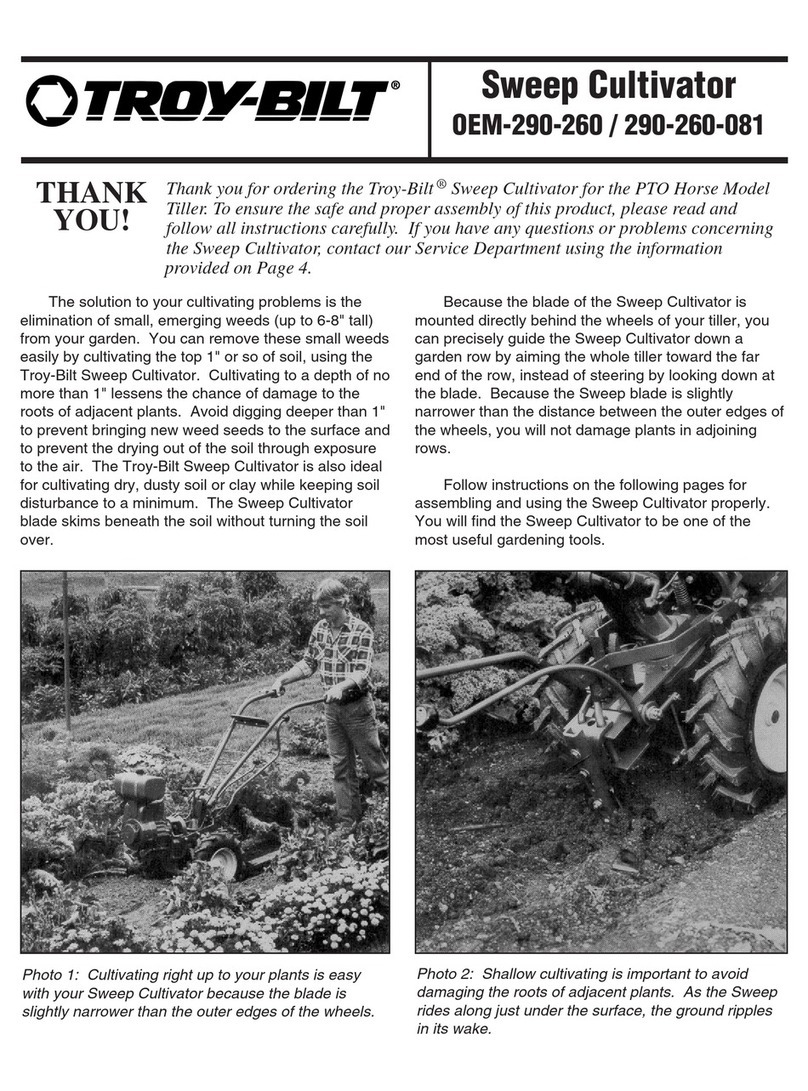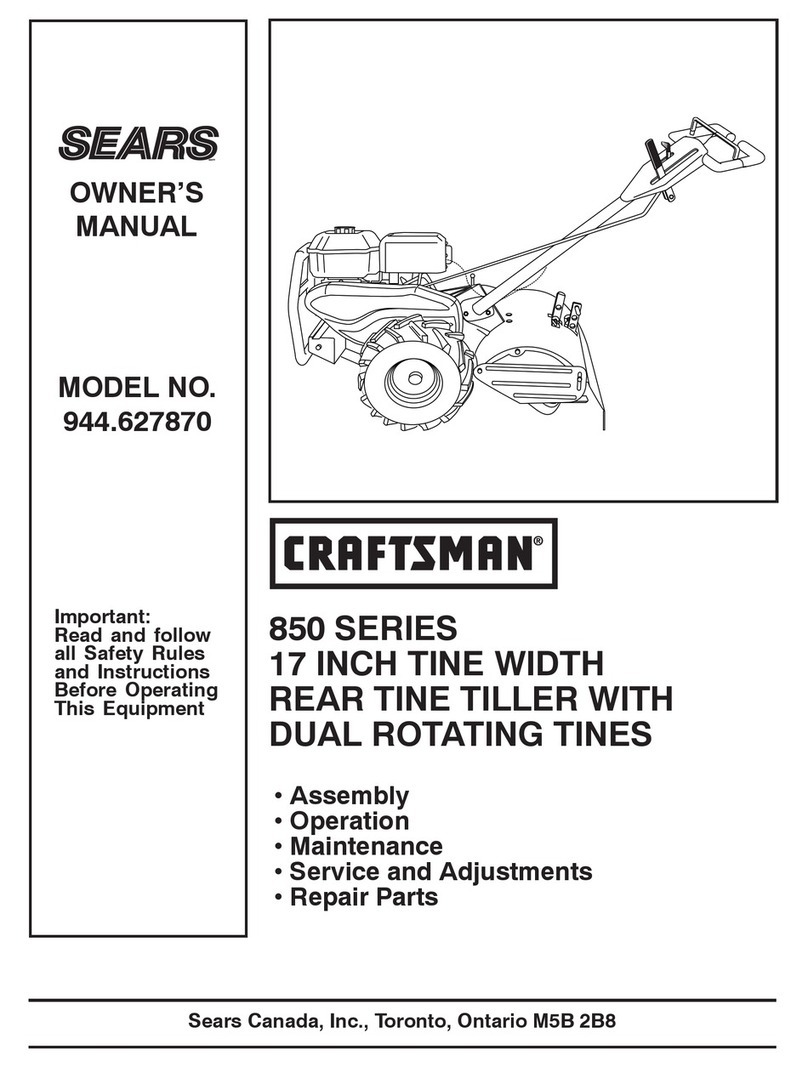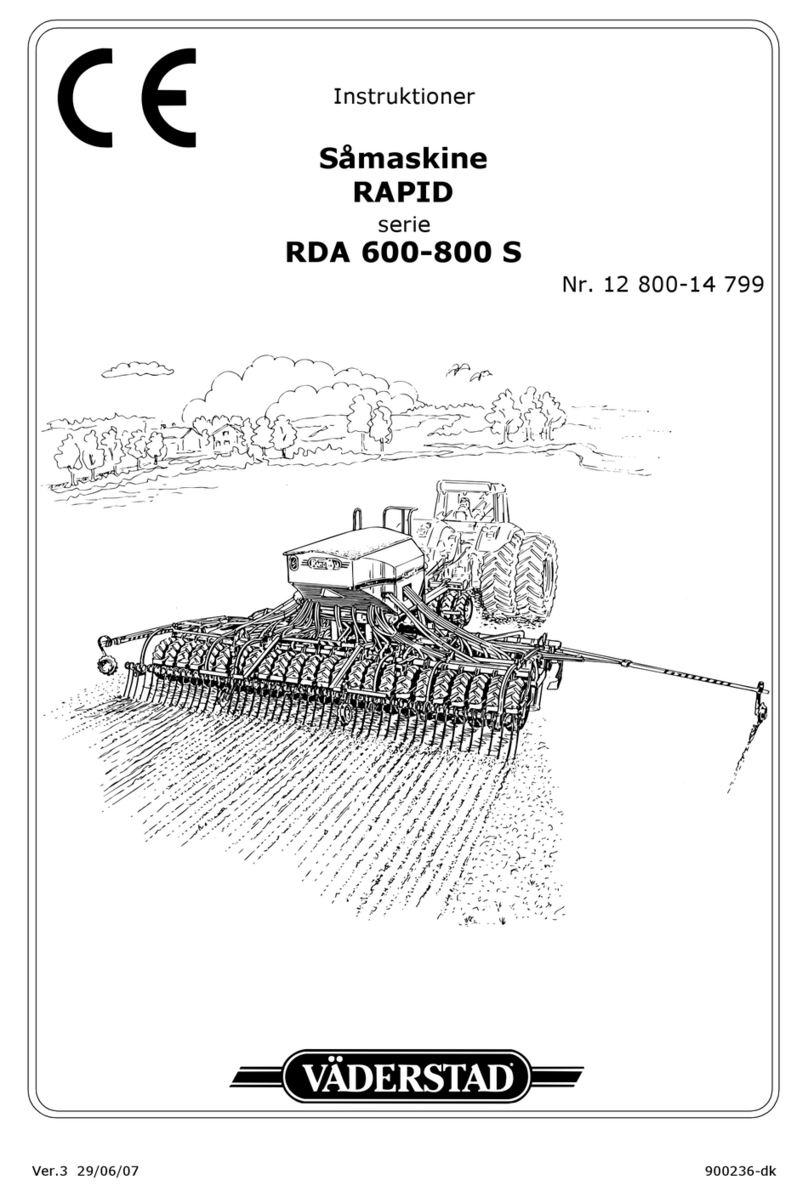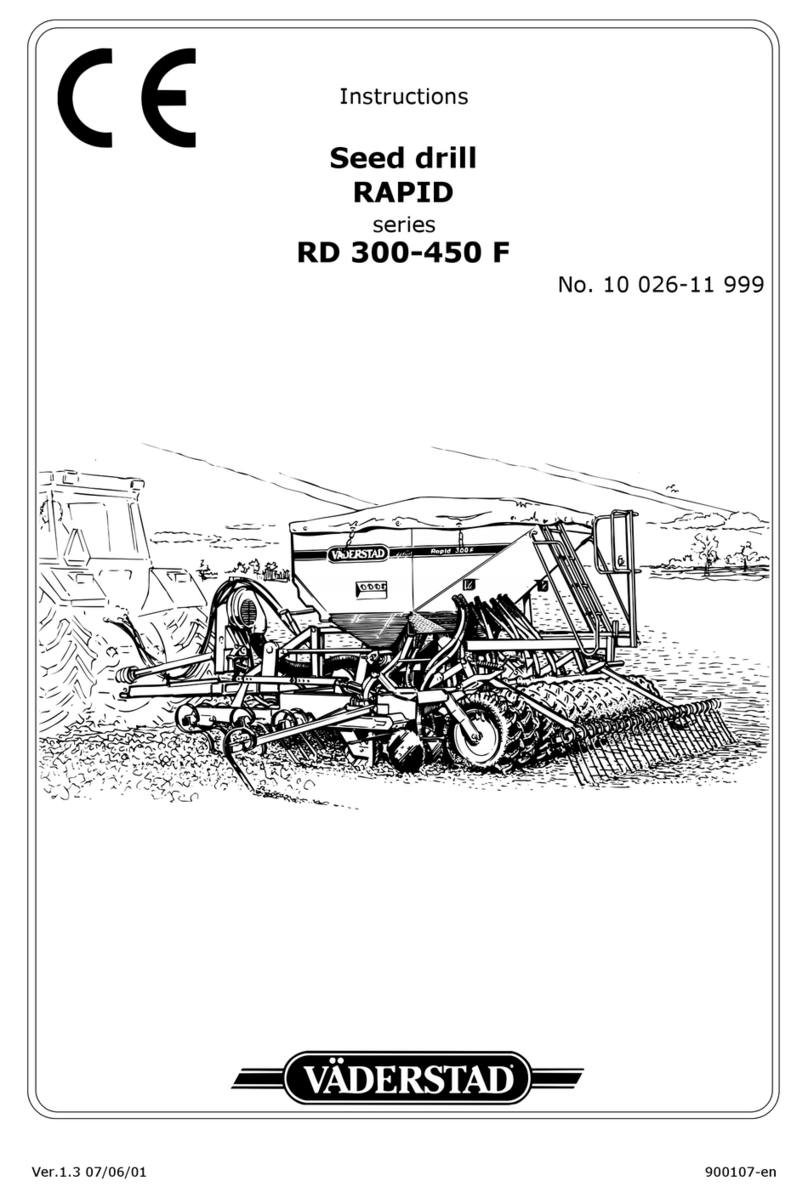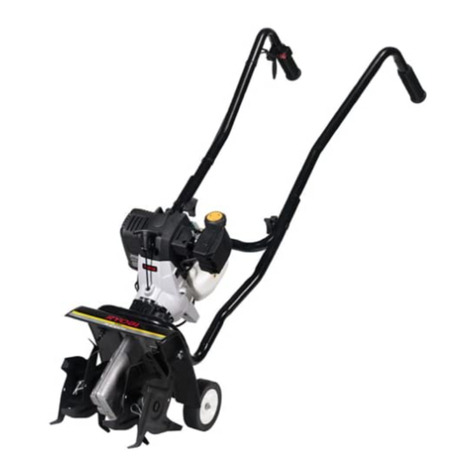
RDA 500-800 S
Ver.2 01.11.2002 5
1 Safety re ulations
1.1 Before using the drill ............................................................................ 8
1.2 Warning decals ................................................................................... 8
1. Other safety precautions .................................................................... 10
1.4 Location of warning decals on the machine ........................................... 10
1.5 Data plates ....................................................................................... 11
2 Assembly instructions
2.1 Lifting and unloading the drill .............................................................. 12
2.2 Removal of transport locking devices .................................................. 1
2. Moving the tool bar tines .................................................................... 1
2.4 Fitting the pre-implements .................................................................. 14
2.5 Fitting the drawbar ............................................................................ 14
2.6 Fitting the drive wheel lifting ram ........................................................ 14
2.7 Removal of the transport plates, centre section ..................................... 15
2.8 Fitting a fan ...................................................................................... 15
2.9 Mounting the fan and radar unit (hydraulic feed output) ......................... 16
2.10 Fitting the air hose ............................................................................ 17
2.11 Fitting the hose bracket ...................................................................... 17
2.12 Installation of the Control Station on the tractor .................................... 18
2.1 Fitting the bout markers ..................................................................... 19
2.14 Fitting the platform ............................................................................ 20
2.15 Fitting the scrapers ............................................................................ 20
2.16 Fitting the following harrow ................................................................. 21
2.17 Fitting the pre-emergence bout markers ............................................... 22
2.18 Installation of lights ........................................................................... 2
3 Instructions and settin s
.1 Tractor ............................................................................................. 24
.2 Inspecting the drill's towing eyelet ....................................................... 24
. Hitching and unhitching the seed drill ................................................... 25
.4 Adjusting hose length and connecting intermediate cable ........................ 27
.5 Switching between transport and working modes ................................... 28
.6 Horizontal alignment .......................................................................... 0
.7 Adjusting sowing depth ...................................................................... 1
.8 Adjusting weight transfer .................................................................... 2
.9 Adjusting the changeover valve ...........................................................
.10 Adjusting the tool bars ....................................................................... 4
.11 Setting the radar (hydraulic feed output) .............................................. 5
.12 Setting the seed rate, mechanical feed output ....................................... 6
.1 Seed box settings with hydraulic feed output ......................................... 6
.14 Calibration, mechanical feed output ..................................................... 7
.15 Calibration, hydraulic feed output ........................................................ 9
.16 Prior to filling the hopper .................................................................... 4
.17 Operation test ................................................................................... 45
.18 Emptying the seed hopper .................................................................. 45
.19 Adjusting the air-flow ......................................................................... 46
.20 Control station .................................................................................. 50
.21 Tramlining ........................................................................................ 6
.22 Adjusting the following harrow ............................................................ 64
.2 Adjusting Low lift height ..................................................................... 65



